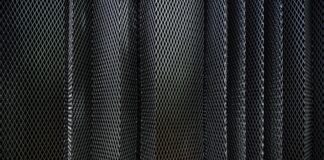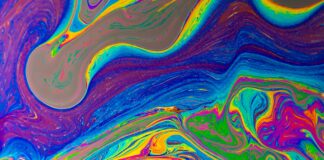In the world of creativity and self-expression, AI in the DIY fashion is rapidly becoming a transformative force that empowers individual designers and hobbyists alike. From personalized pattern creation to virtual fitting assistance, the impact of AI in the DIY fashion space is broad and profound. As technology integrates with traditional crafting techniques, understanding AI in the DIY fashion is essential for anyone looking to innovate, personalize, and streamline their fashion projects. This article explores ten critical things you must be aware of about AI’s role in reshaping the DIY fashion landscape, blending technology and artistry to revolutionize how fashion enthusiasts create and customize their wardrobes.
1. AI-Powered Custom Pattern Design
One of the most groundbreaking applications of AI in DIY fashion is the ability to generate custom sewing patterns tailored to individual body measurements and style preferences. Unlike generic, one-size-fits-all templates, AI algorithms analyze your measurements and personal style inputs to create precise patterns that fit perfectly. This not only reduces the frustration of ill-fitting garments but also saves time and material waste. Tools like PatternMaker and Adobe’s AI-enhanced Illustrator are already helping DIY enthusiasts turn their design ideas into perfectly tailored realities.
2. Virtual Try-On and Fitting Tools
Fitting is a common challenge in DIY fashion projects. AI-powered virtual fitting rooms and try-on apps allow users to visualize how a garment will look on their body before cutting any fabric. By using body scanning and augmented reality (AR), these tools simulate fit, drape, and even movement, giving users confidence in their creations. Platforms such as Zeekit and Fit Analytics enable DIY designers to avoid costly mistakes, improve garment accuracy, and personalize their projects efficiently.
3. AI-Driven Fabric and Material Recommendations
Choosing the right fabric can be daunting, especially when considering texture, stretch, durability, and care instructions. AI-powered recommendation engines analyze the project’s requirements alongside user preferences and even environmental factors to suggest the best fabrics for the job. These systems reduce guesswork and help DIYers select materials that enhance comfort, longevity, and style. This technological guidance improves the overall quality and satisfaction of DIY fashion creations.
4. Step-by-Step AI-Assisted Tutorials
Learning new techniques can be intimidating for DIY fashion beginners. AI-driven platforms provide interactive, personalized tutorials that adapt to a user’s skill level and pace. These tutorials leverage computer vision to monitor progress, offer real-time feedback, and adjust instruction complexity. Whether you’re mastering embroidery, pleating, or fabric dyeing, AI assistants guide you through the process, making learning accessible and enjoyable.
5. Sustainable DIY Practices Encouraged by AI
Sustainability is increasingly important in fashion, and AI supports eco-friendly DIY practices by optimizing fabric usage and encouraging upcycling. AI tools calculate precise fabric requirements, minimizing waste, and suggest ways to repurpose old garments creatively. Additionally, AI can recommend sustainable materials or zero-waste pattern designs. This fusion of technology and sustainability helps DIYers reduce their environmental impact while crafting unique, stylish pieces.
6. AI-Enhanced Design Inspiration and Idea Generation
Stuck for ideas? AI-powered design tools scan global fashion trends, social media, and historical archives to offer fresh inspiration tailored to your taste. By inputting style preferences, color palettes, and garment types, DIY enthusiasts receive curated mood boards and design suggestions. This creative boost helps users stay current with trends while infusing their projects with originality and personality.
Looking forward, the fusion of AI and DIY fashion is expected to deepen, with AI becoming an indispensable creative partner. Advances in AI will allow for real-time co-design, where users and machines collaboratively create garments tailored to evolving tastes and functional needs. As AI integrates with wearable tech and smart textiles, DIY fashion will not only be about aesthetics but also about interactivity and personalization at a new level.
7. Integration with Digital Fabric Printing
AI is revolutionizing how DIY designers approach textile printing. Through AI-driven digital fabric printing services, users can create custom prints with intricate designs or even photos. The AI optimizes the print quality, color balance, and fabric compatibility to produce professional-grade results at home or through online platforms. This democratizes the ability to produce personalized, high-quality fabrics without needing industrial equipment.
8. Community and Collaboration Platforms Powered by AI
Online communities are vital for sharing DIY fashion knowledge and inspiration. AI enhances these platforms by curating content, matching collaborators, and facilitating skill exchanges. Through natural language processing and recommendation algorithms, AI connects users with similar interests and complementary skills, fostering creative partnerships. This sense of community accelerates learning and broadens the scope of what DIY fashion enthusiasts can achieve.
9. AI-Enabled Cost Estimation and Budget Management
Budget constraints are a reality for many DIYers. AI-powered tools can analyze project plans, materials, and complexity to provide accurate cost estimates before you start. These insights help users make informed decisions, compare suppliers, and manage spending effectively. By offering transparent budgeting support, AI ensures that fashion projects remain feasible and financially enjoyable.
Looking forward, the fusion of AI and DIY fashion is expected to deepen, with AI becoming an indispensable creative partner. Advances in AI will allow for real-time co-design, where users and machines collaboratively create garments tailored to evolving tastes and functional needs. As AI integrates with wearable tech and smart textiles, DIY fashion will not only be about aesthetics but also about interactivity and personalization at a new level.
10. The Future: AI and DIY Fashion Becoming Indistinguishable
Looking forward, the fusion of AI and DIY fashion is expected to deepen, with AI becoming an indispensable creative partner. Advances in AI will allow for real-time co-design, where users and machines collaboratively create garments tailored to evolving tastes and functional needs. As AI integrates with wearable tech and smart textiles, DIY fashion will not only be about aesthetics but also about interactivity and personalization at a new level.
Conclusion
The integration of AI in the DIY fashion space is opening unprecedented doors for creativity, personalization, and sustainability. From pattern creation and virtual fitting to sustainable practices and budget management, AI empowers DIY enthusiasts to bring professional-grade fashion projects to life with greater confidence and precision. As technology continues to advance, the blend of AI and DIY fashion promises a future where creativity is amplified, waste minimized, and style uniquely individual. Embracing these ten insights will help anyone interested in DIY fashion to harness AI’s full potential and revolutionize their creative process.














